The size of College Football stadiums continues to grow, with eight schools playing in venues with a capacity of over 100,000. Among the top 10, five are in the SEC (Georgia, Tennesee, Texas A&M, Alabama, LSU), three in the Big Ten (Ohio State, Penn State, Michigan), one in the Pac-12 (USC) and another in the Big 12 (Texas).
All of the stadiums on this list except for one, Beaver Stadium which hosts Penn State, have been built in the 1920’s. Beaver Stadium broke ground in 1959 and was opened in 1970.
10th – Sanford Stadium (Georgia Bulldogs), 92,746
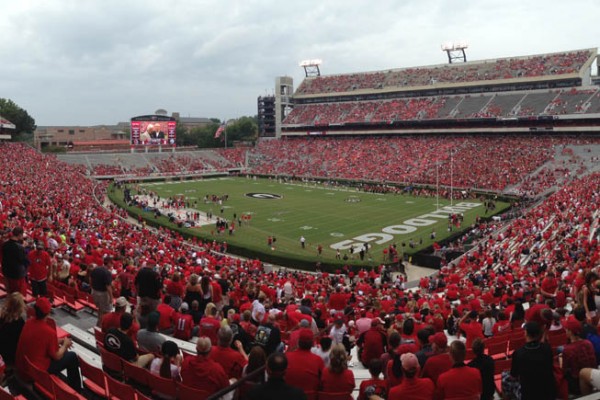
Named for Dr. Steadman Vincent Sanford, Sanford stadium has been open since 1929, and underwent several renovations and expansions over the years, beginning with a modest capacity of 30,000. It was used in the 1996 Olympics held in Atlanta as one of the soccer stadiums for both the men’s and women’s competitions. It is known for its hedges, standing around the field in some form or another since it opened, although they were removed, only to be installed again, before the Olympic games.
9th – Los Angeles Memorial Coliseum (USC Trojans), 93,067
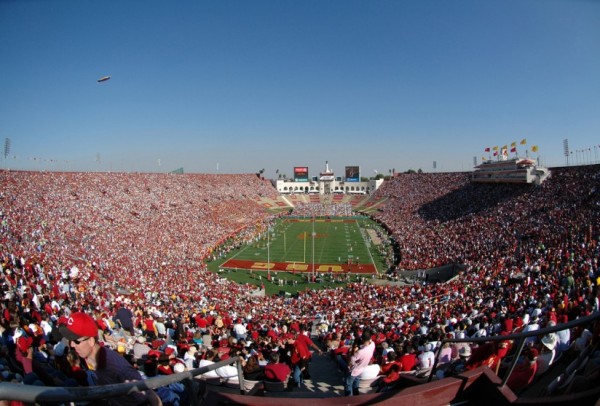
The largest of the Pac-12 stadiums, The Coliseum has been open since 1923, obviously changing over the years with many still to come, undergoing minor renovations recently (in 2010 and 2014). It has been home to a lot of teams over the years and was used for the 1932 and 1984 Olympic games. The new titleA11FL Pro Football League will play in the Coliseum starting in the Spring 2015 when the league makes it debut.
8th – DKR – Texas Memorial Stadium (Texas Longhorns), 100,119
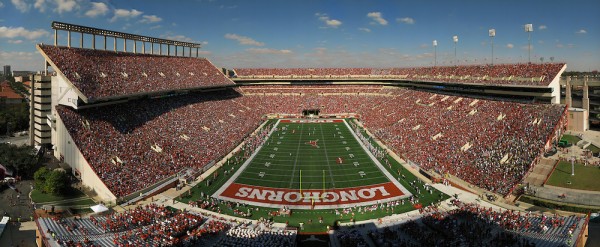
No longer the biggest stadium in the state of Texas, DKR was opened in 1924, and is named for a former head coach and AD at Texas, who actually played his college football with Oklahoma, but is mostly remembered for his time in Austin, winning three national championships. It went past the 100,000 mark in 2009 when the stadium also moved to FieldTurf. On October 6, 2012, 101,851 people showed up to watch the Longhorns lose to West Virginia, the highest attendance recorded at the stadium.
7th – Bryant-Denny Stadium (Alabama Crimson Tide), 101,821
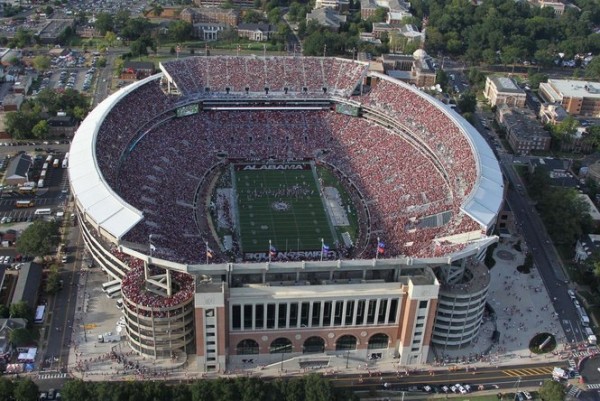
Originally, the stadium was named only after George H. Denny, a former president of the university, but in 1975 the Bryant was added in honor of Paul “Bear” Bryant, winner of six national titles with the Crimson Tide. The stadium opened in 1929 and during Bear Bryant’s tenure with the team, Alabama lost only twice when playing there. However, a lot of Alabama’s history has to do with Legion Field in Birmingham, playing most of their big games there until 1990.
6th – Tiger Stadium (LSU Tigers), 102,321
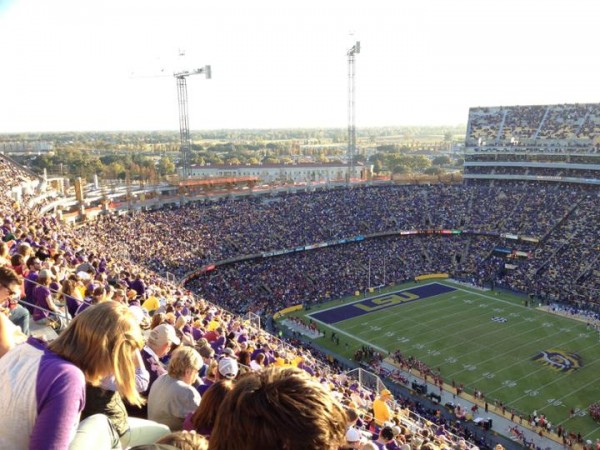
Another stadium that only recently got past 100,000, and will feature that “new size” for the first time when the 2014 season opens. Up until now, the record attendance stood at just over 93,000 in a 2012 game against Alabama, which ended in a loss. In 2013, it was ranked by the NCAA as the loudest stadium in College Football.
5th – Neyland Stadium (Tennessee Volunteers), 102,455
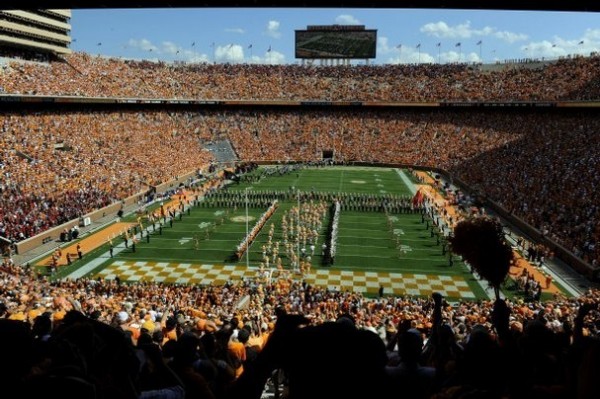
Neyland Stadium has seen better days in terms of wins, as Tennessee has been in something of a slump for quite some time. Opened in 1921, it has seen some major renovations over the last 10 years, being expanded in 2010 most recently. It is named for Robert Neyland, the Vols’ head coach from 1926 to 1952, leading them to four national titles. The record attendance is 109,061, back in 2004 against Florida.
4th – Ohio Stadium (Ohio State Buckeyes), 104,944

The begining of Big Ten domination in the top 4. Ohio Stadium was expanded in 2014 with over 2000 seats added. It was opened in 1922, undergoing major renovation in 2000-2001. Known as The Horseshoe because of its shape, it was added to the National Register of Historic Places by the National Park Service on March 22, 1974.
3rd – Kyle Field (Texas A&M Aggies), 106,511
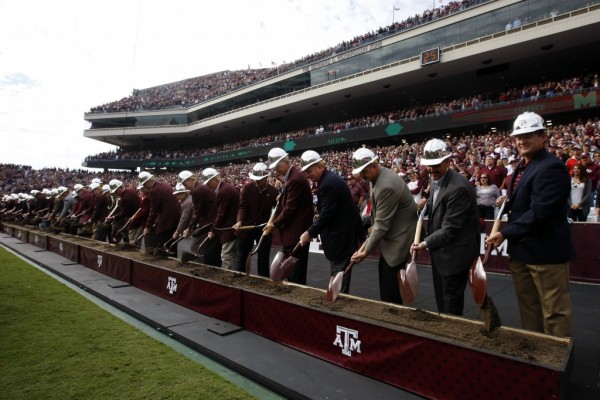
An 80,000-ish stadium over the last 15 years, Kyle Field will be in a complete different stratosphere of size and attendance from now on after the addition of over 23,000 seats. Opened in 1927, it is now the biggest stadium in Texas, the SEC and any conference outside the Big Ten. The stadium is named for Edwin Jackson Kyle. Up until now, the record attendance has been just over 90,000 in a 2010 game against Nebraska.
2nd – Beaver Stadium (Penn State Nittany Lions), 106,572
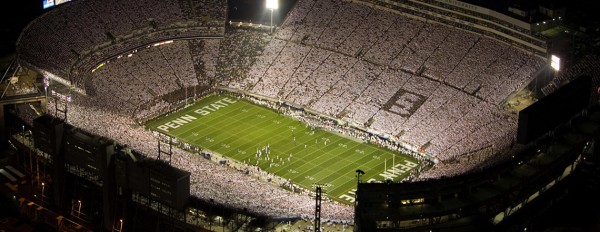
For a very short while it took the number one spot, until Michigan took care of that. It opened in 1970, the youngest of the stadiums on this list, and its record attendance was also in a game against Nebraska (like Texas A&M’s record) from back in 2002 when 110,573 fans showed up for the game. It is usually considered the stadium with the best student section in College Football.
1st – Michigan Stadium (Michigan Wolverines), 109,901
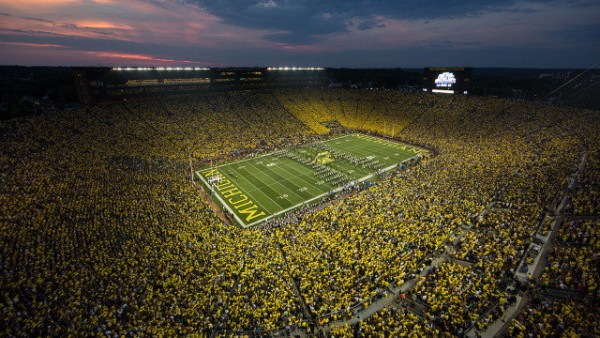
It opened in 1927 with a capacity of 72,00 and has been slowly growing ever since, going another and its most recent expansion in 2010. On September 7, 2013, more than 115,000 showed up to see Michigan beat Notre Dame, although the season didn’t go so well after that point. It is the third largest sports stadium in the world behind the Rungrado May Day Stadium in North Korea and Salt Lake Stadium in India.
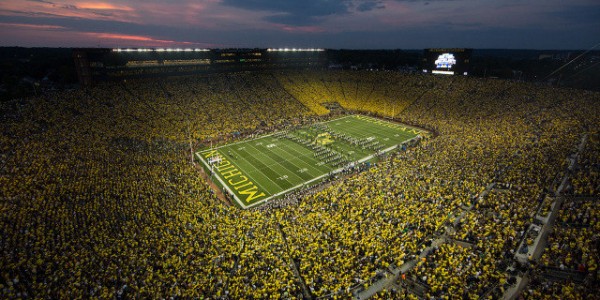
4 responses to “10 Biggest Stadiums in College Football”
[…] state and one of the largest football stadiums in North America. Click here to see the list of the ten largest NCAA stadiums. While you are in Austin, check out the music scene, with more clubs and music festivals than you […]
[…] be a normal college student then go be a normal college student, but you don’t get to run out in front of 106,000 people and be on national TV. So there are […]
[…] Citing another example of a “feel-good law” passed by out-of-sync legislators, Reed blasted the fed’s failed War on Drugs as one of the primary contributors to the breakdown in police – community relations. While Ronald & Nancy Reagan touted their “Just Say No” propaganda program and built new prisons for non-violent offenders, many states adopted the President’s mandatory sentencing laws to ensure those shiny new prisons would soon be at capacity. Reagan’s “tough on crime” stance towards drugs sparked a new prison industrial complex of previously unseen proportions in America, with drug arrests tripling from 1980-1997, 88% of which were for simple possession. Today, over 2.6 million people live behind bars in these United States, composing nearly 22% of the global prison population and setting America in second place for world’s highest incarceration rate (number one is the Republic of Seychelles, home to nearly 92,000 people (roughly the same number that can fit in large college football stadiums)). […]
[…] For the overall biggest stadiums in the FBS / Oldest Stadiums / Smallest Stadiums […]